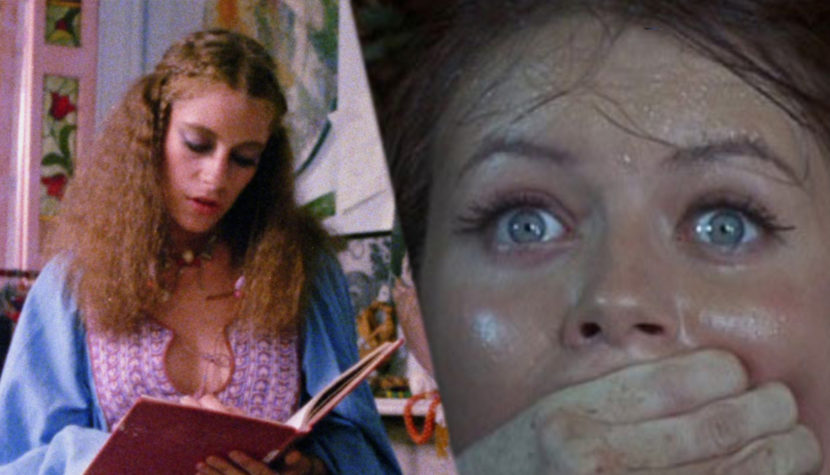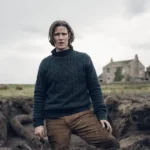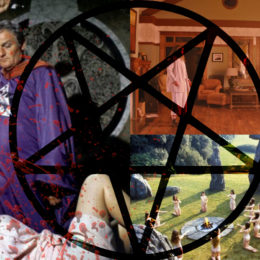FOLK HORRORS you didn’t know existed

It is worth starting considerations about folk horror with the statement that this name results from the specific meaning that is built around the term folk, meaning people. Folk horror takes place in the scenery of a rural landscape. Aspects such as violence, fear and terror are not the domain of people outside, but rather of individuals inside the so-called closed cultural circle. Therefore, the entire community is entered into a series of endless rituals, spells, curses and village beliefs that are transferred to uninvited guests from the outside. Due to the fact that it is not possible to present a uniform definition of folk horror, it is worth referring to the assumptions presented by Adam Scovell, who in 2014 presented the main elements proving that a given production can be considered a representative of the genre of folk horror. It is primarily focused on the basic aspects, such as: landscape, isolation, distorted moral beliefs and an event, which most often manifests a violent and drastic character, meaning death, madness or ritual sacrifice. Because I deal with folk horror as part of my research work, I decided to bring you closer to a few items that you might not have known existed, and you certainly didn’t know that they were folk horrors.
The White Reindeer (Valkoinen peura, 1952)

Just as there are many dates regarding the emergence of the genre of folk horror, this trend developed in different ways in different parts of the world, at different times. The White Reindeer is not only a Finnish classic that has appeared at the Cannes festival, but above all, the winner of the Golden Globe for the best foreign language film. The plot itself focuses on a folk tale, where Laplander Pirita – the main character – frustrated by the long absence of her husband, a reindeer herder, seeks help from a local shaman. However, he turns her into the titular white deer, a demonic figure drinking human blood like a vampire. The production offers real horror filled to the brim with magical realism and beautiful shots.
This is an example of forgotten folk horror, which draws a lot from folk tales of a given region and fairy tales. This work is truly disturbing and thoroughly strange, trying to explore older and darker stories deeply rooted in the folk consciousness. The film was shot in the northern part of Finland, where the snowy wasteland seems to go on forever. The director tries to make full use of the natural circumstances at his disposal, making even the shadows cast by the clouds take on ominous shapes, thus attributing the hostility to something as seemingly innocent as the surrounding landscape, which in turn is inscribed in the understanding of folklore horror. one of the elements of which is the ominous scenery.
Related:
Assault (1971)

The British inconspicuous production stands out from others of this type, and in particular – in my opinion – lays the foundations for the British trend of folklore horror, which began with such cult films as Wicker Man (1973) or Witchfinder General (1968). It is worth noting that in Great Britain the production functioned under the title In the Devil’s Garden. Director Sidney Hayers is known for another folk horror classic – Night of the Eagle (1962), but his next work, made almost a decade later, also draws heavily on disturbing folk tales, although in this case we are dealing with a much more “dirty” edition. The plot initially focuses on attacks on schoolgirls who are raped, but the perpetrator does not stop there and in the end one of the girls is murdered. The whole event is observed by one of the previous victims, who was left in a catatonic state by trauma. The second witness is a teacher who testifies that the suspect looked like the devil, which is why she is not taken seriously by members of the community.
I really like the approach of the director, who deliberately frames the film in a certain way, somehow suggesting to the viewer that the perpetrator of the crime may actually belong to supernatural phenomena. Add to this the trend from the early 1970s, where the more dirt and occultism on the screen, the better. The production begins as a decent crime thriller and ends as one of the best horror films of the decade. Of course, the film can be accused of using a few plot twists that are funny in my opinion, but in the end it is a well-acted, well-shot folk horror with some really spooky scenes. This is a production that definitely deserves more attention.
The Appointment (1981)

Anyone who remembers actor Edward Woodward’s brilliant performance in 1973’s The Wicker Man will probably be surprised to learn that for almost the next decade Woodward avoided appearing in horror films, and especially in folk horror films. It wasn’t until 1981 that the film’s director, Lindsey C. Vickers, encouraged him to appear in his only feature-length film. Prior to making The Appointment, Vickers worked on a number of works for the British label Hammer throughout the 1970s. Given the turmoil in the British film market at that time, it is surprising that the production received the necessary funds and could be made at all. However, it should be borne in mind that it was released immediately on VHS due to the boom that the video market was experiencing at the time. Today, you can legally watch it on YouTube.
If you hope that it can be included in any film framework, you are wrong; almost anything can happen here. Especially since the main character Ian begins to experience a strange premonition about a car accident caused by – attention, attention – mystery dogs. Many people compare the production to The Omen from 1976, directed by Richard Donner, and they are partly right. However, it is primarily a folk horror focusing on the exploration of such elements as: isolation, ominous landscape, distorted beliefs of a given community and “supernatural” events leading to a bloody end.
Alison's Birthday (1981)

On the list, I put as many as two proposals from the antipodes, where one of them is a movie called Alison’s Birthday. It tells the story of the titular Alison, who returns to her family home on her nineteenth birthday. At some point, however, she begins to feel bad (a reference to Rosemary’s Baby?), and disturbing things begin to happen around her. It turns out that her boyfriend may be the only person able to save his beloved.
Lets be honest. It is not the most revealing work on occult groups and magical rituals that has appeared in the history of cinema. However, this is a really solid folk horror intended mainly for teenagers. So we have devil worshipers, druids, magical rituals and an over 100-year-old grandmother who, as if nothing had happened, wanders around the house, sending shivers down the spine of the viewer. I like that, unlike other productions of this type, the main character’s boyfriend is exceptionally composed and supportive, which in itself is quite unusual. In my opinion, it is a real gem among horror productions from the early 1980s. Particularly noteworthy is the opening scene, which offers a surprising and shocking plot twist in the first minutes of the film.
Celia (1989)

The list also includes another unusual proposal straight from Australia, which shortly after its premiere was hailed as “Lord of the Flies for girls”, which, to be honest, is not an exaggeration at all. It is above all a surreal representation of the world, where naivety and fairy-tale aspects have been mixed together, creating a truly explosive mix. The plot focuses on the title character, who in 1950 grows up in one of the districts of Melbourne. The world built on folklore and unusual visions is her way not only to survive, but – more importantly – to grow up. The heroine collides with the adult world, which is full of political tension and fear of communism (red panic). At times, one can notice that similar motifs were later used by, for example, the Mexican director Guillermo del Toro in his Pan’s Labirynth from 2006. Critics of the late 1980s agreed that the production brilliantly captured the fears and anxieties of childhood, turning them into a horror in themselves.
The Piper (Sonnim, 2015)

The list would not be complete without mentioning at least one Korean production, due to the fact that most of them are steeped in direct references to local folklore. It fell on one of the newer folk horrors, focusing on telling a story inspired by a German folk tale (the flutist from Hamelin), which was later written down by the famous Brothers Grimm. The plot focuses on the period after the end of the Korean War, when a vagabond father on his way to Seoul – where his sick son is to undergo treatment – encounters a village struggling with rats. He decides to solve the problem in exchange for an appropriate payment. However, when the inhabitants do not want to fulfill their side of the bargain, the title ratcatcher decides to take revenge in a rather bloody and unusual way. Although the original fairy tale was most likely about the plague epidemic, I like how Koreans use original motifs and remake them in their fashion. It must be borne in mind that this is only the first film in the director’s career, and how successful it is. A dark folk tale, role reversal, where the villagers are both torturers and victims, and the atmosphere characteristic of Korean productions – these are undoubtedly the elements that contributed to the success of this production.




